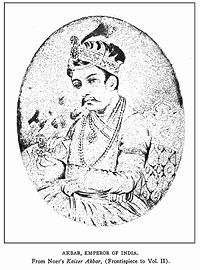Chunar Fort
| Chunar Fort | |
|---|---|
| Part of Fort | |
| Code | CAR |
| Height | 280 feet (85 m) |
| Site information | |
| Controlled by | Archaeological Survey of India Ministry of Tourism |
| Open to the public | Yes |
| Site history | |
| Built | Eleventh century and improvements in sixteenth century |
| Built by | King Sahadeo in 1029 |
| Materials | Chunar sandstone |
The Chunar Fort (also known as Chandrakanta Chunargarh and Charanadri) is located in
Geography
Chunar Fort is approached by road from

The fort stands on a rock, a detached part of the
The rocky face of the fort is impregnable because of its steep slope. Many crude cylinders were stored in the fort that defenders could roll down onto any enemy soldiers attacking the fort. Most of the enclosed fort area consists of plains overgrown with grass and a few trees.
Legends
There are many legends linking the fort to divine aspects. One such is the story of
The second legend is king
A third legend linked the fort to the well known king of Rajasthan.
History

Settlements have been recorded here since 56 BC, from the time of Vikramāditya of Ujjain.

Akbar, the third Mughal Emperor, had visited Chunar for
It is also said that
In 1849, Maharaja Ranjit Singh's wife, Rani Jind Kaur was incarcerated in Fort Chunar after the British usurped the Sikh kingdom. She escaped from the fort in the disguise of a maid servant and went to Kathmandu where she was granted political asylum.[11][12]
Chunar Fort was on the hit list of the
There is also a paranormal history connected with Chunar Fort i.e. the King of Chunar had buried his rich treasure because he knew that the British people would take it from them. Also he connected aatma with it.[citation needed]
The History of Chunar For is beautifully summarised in Sanjeev Sanyal's book Land of Seven Rivers: History of India's Geography in the following words:[14]
"It was once said that he who controlled Chunar fort also controlled the destiny of India. A walk through the fort is a walk through Indian history. The walls resonate with tales of the legendary King Vikramaditya, the Mughals, Sher Shah Suri and Governor-General Warren Hastings. There are remains here from each era including an eighteenth-century sundial. Do not miss the neglected British graves below the walls. Their headstones make for interesting reading. Just south-west of the fort are the quarries that, in the third century BC, supplied the stone used by the Mauyans to carve the lions of Sarnath"
Walls and gates
The impregnable citadel is built with huge

Of all the gates, only the fort's west gate has inscriptions, which ascribe to its construction during Akabar's period by Muhammad Sharif Khan, who is presumed to be the son of an artist. He is said to have served under Munim Khan who was granted the fort and the surrounding lands since it yielded a lot of revenue, in 1567. Munim Khan died here in 1575. The west gate has the least ornamentation but has calligraphy engraved slabs. Other gates of the fort have carved panels and brackets.
Buildings
The Citadel which is the main structure of the fort, in its northeastern part, was mounted with many

A pavilion, dating to 1538, was used as the gatehouse.
See also
References
- ^ a b c d Datta, Rangan (2 January 2024). "Exploring Chunar's timeless tales in the heart of its architectural heritage". The Telegraph. My Kolkata. Retrieved 15 January 2024.
- ^ a b c d e f g h i j "Mirzapur". Official web site of the district by National Informatics Center. Archived from the original on 22 February 2012. Retrieved 8 November 2012.
- ^ a b c d e f g h Thornton, Edward (1858). A Gazetteer of the Territories Under the Government of the East India Company and of the Native States on the Continent of India (Public domain ed.). W. H. Allen. pp. 215–216. Retrieved 11 November 2012.
- ISBN 978-81-7156-817-8. Retrieved 11 November 2012.
- ^ "The Fort, Chunar (U.P.). 12 September 1803". Online Gallery of British Library. Retrieved 9 November 2012.
- ^ "North view of the fort of Chunargarh on the Ganges from across the river". Online Gallery of British Library. Retrieved 9 November 2012.
- ^ a b c d "Chunar Fort on the Ganges (U.P.). 3 August 1822". Online Gallery of British Library. Retrieved 9 November 2012.
- ^ ISBN 9780141001432.
- ^ ISBN 9780521267281.
- ^ "Chunar:History". National Informatic Center. Archived from the original on 23 October 2004. Retrieved 10 November 2012.
- ^ All About Sikhs – The Annexation of the Punjab
- ^ Singh, Harbans (2002). Encyclopedia of Sikhism (2002 ed.). Punjabi University.
- ^ "Chunar Fort, district jail on Naxal hit list". Hindustan Times. 1 January 2001. Archived from the original on 8 February 2013. Retrieved 9 November 2012.
- ^ Land of Seven Rivers: History of India's Geography, Sanjeev Sanyal
- ISBN 978-81-87780-04-5. Retrieved 11 November 2012.
